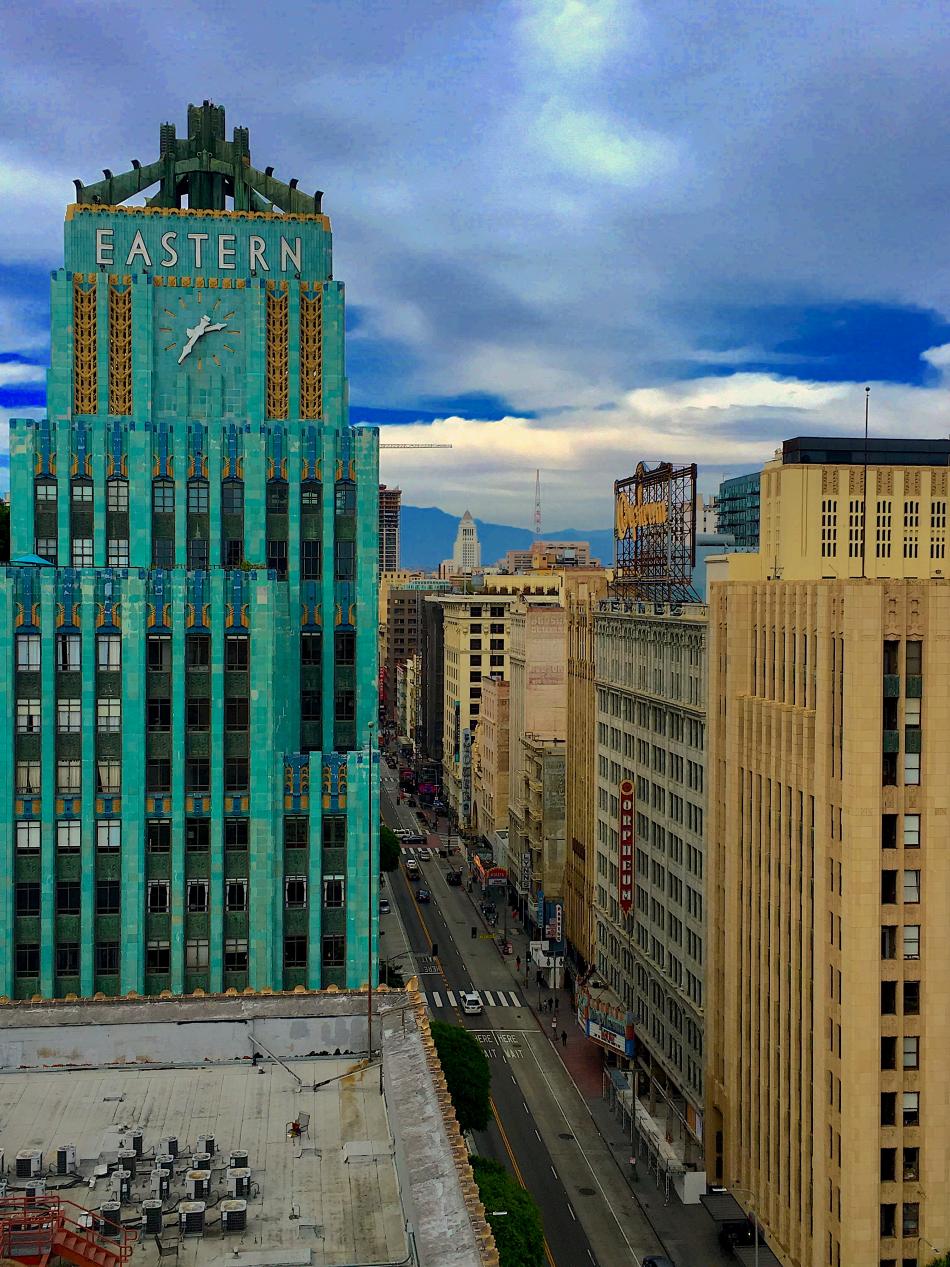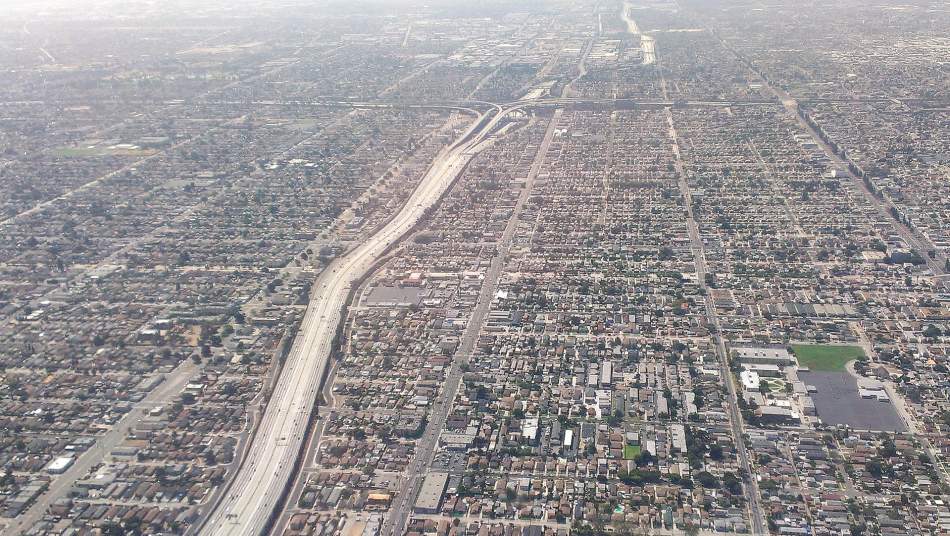Things to read from the past week:
While you were in quarantine, a major new art museum rose in Orange County "During the dark and quiet days of pandemic shutdown, the new Orange County Museum of Art building, under construction at Segerstrom Center for the Arts in Costa Mesa, slowly but steadily took shape and is now about three-quarters complete. The $93 million building by Morphosis Architects, the 80-person studio founded by Pritzker Prize-winning architect Thom Mayne, was designed to be many things: the new home for a contemporary art museum — more than a decade in the works — that will nearly double exhibition space and raise the institution’s profile, for one. A community gathering space in sprawling and disjointed Orange County, with a grand staircase that Mayne modeled after New York’s Metropolitan Museum of Art steps, for another. A fluid, light-filled structure that will be architecturally and programmatically simpatico with the five other arts entities on Segerstrom’s campus — “a good neighbor,” as new Director Heidi Zuckerman put it on a recent construction site tour." (LA Times)
Metro Can Pilot Fareless Transit AND Increase Service. Because If Not Now, When? "The difference between this decade and the last could not be more stark. In our estimation, Metro faces a bright future with the influx of significant federal and state dollars and a 'euphoric' recovery that will generate sales tax revenue exceeding projections. With catastrophic climate change becoming a reality in this decade, added to the disproportionate impact of COVID-19 on low-income households and people of color, Metro has the moral obligation—and now the resources—to both sustain a fareless system AND increase service." (Streetsblog LA)
Are LA's High-Rises Ready for the Big One? Los Angeles has mandated the retrofit of soft-story apartments buildings - those tuck-under parking in areas supported by poles - but what about the 1960s and 1970s office towers scattered throughout the region? (LAist)
Los Angeles' Commuter Rail Network Evolution "From its beginning in 1982, Los Angeles' commuter rail network has grown to 62 stations, spanning 534 miles (859 kilometers). This animated video takes you through the timeline of when new stations were opened, forming the Metrolink network that we know today." (Vanishing Underground - YouTube)
The falling rents of COVID times are behind us. Expect prices to rise "In Los Angeles, the median rent for a vacant apartment hit a low of $1,717 in January and has risen ever since, according to data from rental website Apartment List. Other data sources also show a steady increase since the beginning of the year, which analysts attributed to job growth and returning demand for city life as the pandemic ebbs and the economy reopens." (LA Times)
 View of the Eastern Columbia Building and Broadway corridor in Downtown Los AngelesWikimedia Commons
View of the Eastern Columbia Building and Broadway corridor in Downtown Los AngelesWikimedia Commons
Eyes on the Street: Culver City Expo Bike Path Gap "The Expo Line bikeway parallels the Metro E Line for 12 miles – from USC to Santa Monica. East of La Cienega Boulevard, the Expo bikeway is five miles of on-street bike lanes. West of La Cienega, the path is seven miles of off-street bike/walk path, except for two short gaps." (Streetsblog LA)
The LASD Wants to Sweep Venice, but Councilmember Mike Bonin Has Other Ideas "Knock LA was provided evidence confirming that Sheriff Villanueva has spoken to LAPD Chief Michel Moore and Deputy Mayor Jeff Gorrell about a plan wherein he has 2,000 custody beds downtown that can be used for a 48-hour hold if the unhoused residents on the Venice boardwalk are 'non-compliant.' The City Attorney preliminarily affirmed the ability of law enforcement to carry out this involuntary detention without City Council approval. Moore told Deputy Mayor Jeff Gorrell that if City Council lifts the moratorium on ordinance 56.11, the LAPD could enforce these restrictions on camping and the LASD would have to 'stop the operation.'" (Knock LA)
As traffic rebounds in L.A., commuters say they won’t go back to the way things were "Informed that they will be expected to return to the office at least part time, workers are scrambling to lessen or eliminate their former commutes by moving closer to work, negotiating new terms with their managers, switching jobs or quitting altogether." (LA Times)
L.A. traffic behavior is changing. Is post-pandemic gridlock inevitable? "One factor will be how flexible companies will be in requiring employees to return to the office. Some firms have talked about allowing employees to telecommute several days a week, which could ease the traffic burden in job centers. And at least 70% of American workers say they would prefer to switch to a hybrid work-from-home schedule or stay remote full time, a recent survey by the Society for Human Resource Management found. Another question is how many riders will return to buses, trains and subways. Mass transit took a big hit during the pandemic, but ridership is beginning to creep up again. Time will tell whether those numbers return to pre-2020 levels and how many people who abandoned mass transit will opt for cars instead." (LA Times)
Meet the Woman In Charge of Conserving Every Single Inch of the Watts Towers, L.A.’s Most Iconic Landmark "This massive art collection was built over 33 years from 1921 to 1954 by Sabato ‘Simon’ Rodia, an Italian immigrant born and raised in Serino, Italy. He built the entire site by hand using scrap materials such as pottery, seashells, railroad tracks, pipes, and other 'found' objects, including an iron headboard. Covizzi says, 'Rodia dug a foundation by hand of 14 inches and distributed the weight of the towers in a perfect way. He didn’t have any notion of architecture. It was pure instinct, and they are still standing after almost 100 years.'" (LA Taco)






